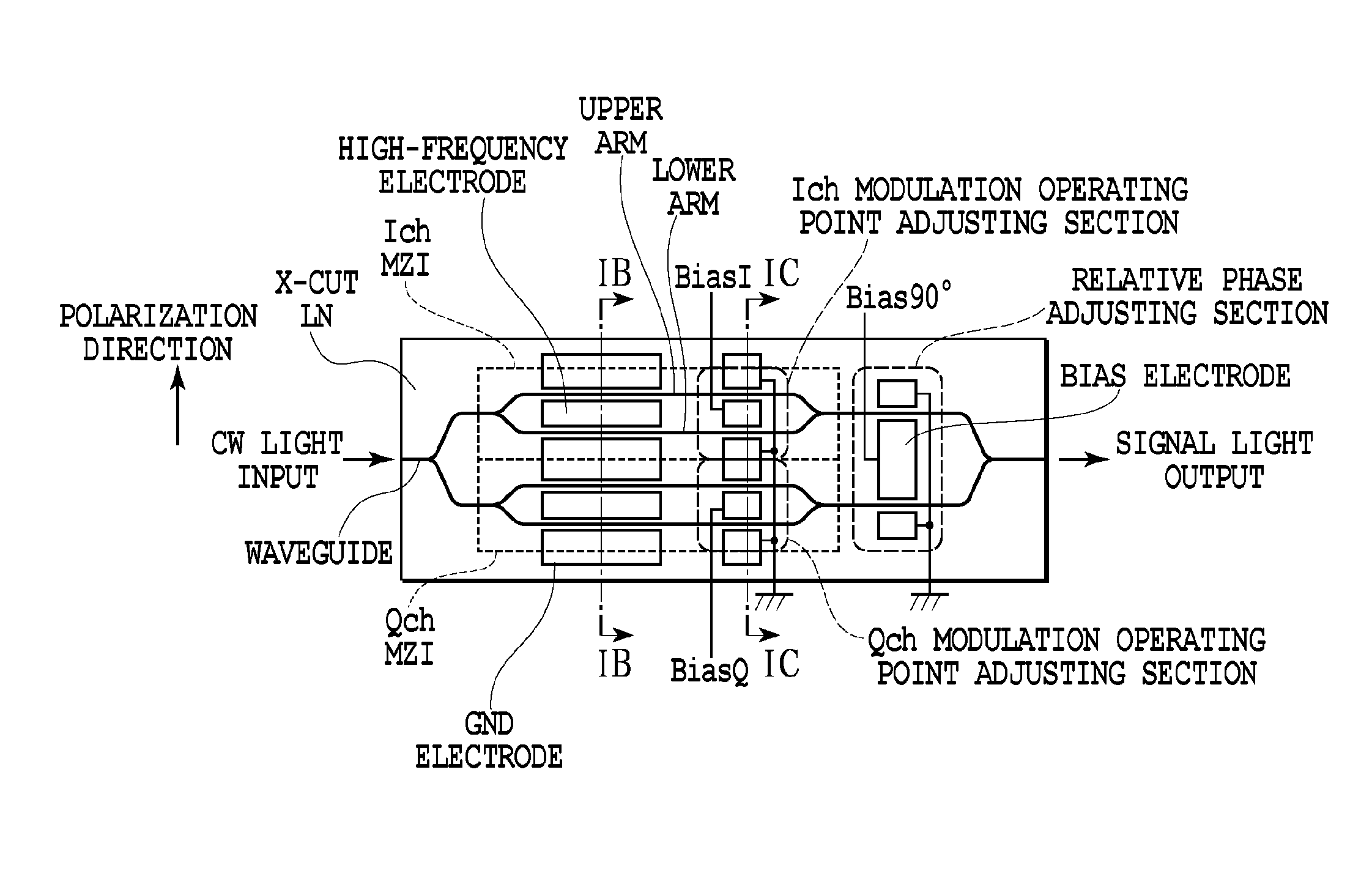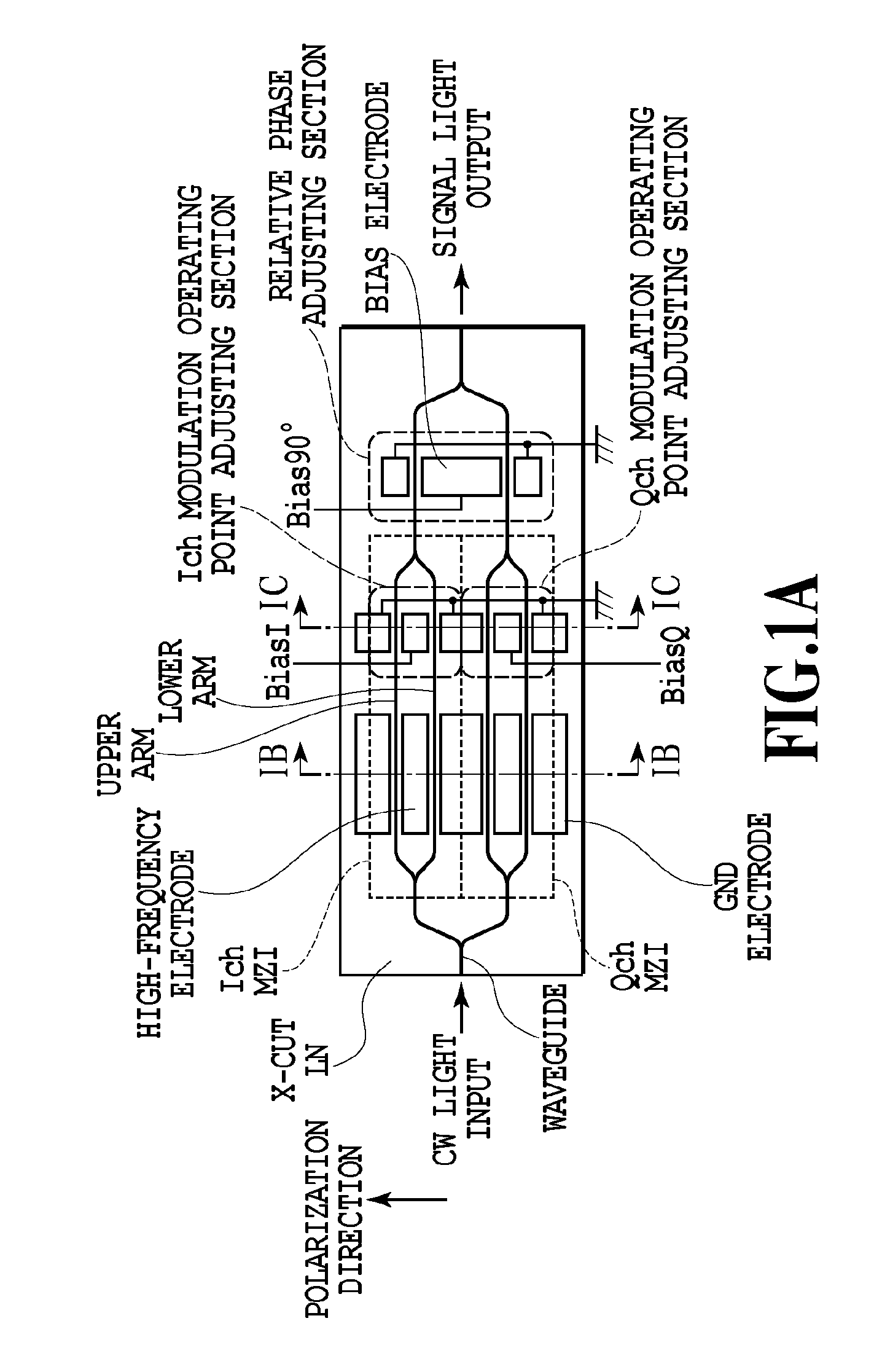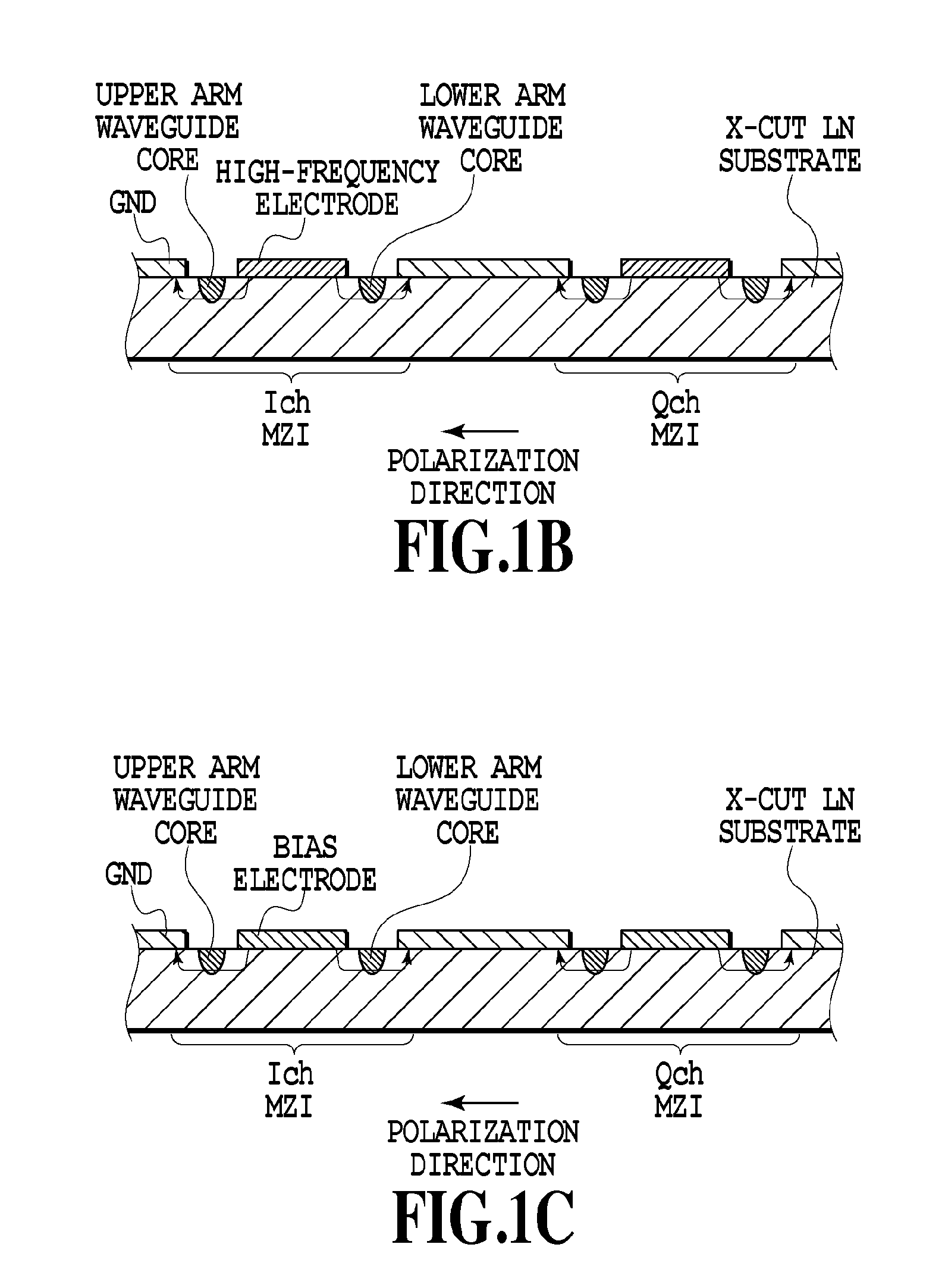Optical modulator
a modulator and optical technology, applied in the field of optical modulators, can solve the problems of increasing the power consumption of the bias adjustment, increasing the power consumption of the driving circuit, and increasing the disadvantage of hybrid integrated-type nest mzi modulators, so as to eliminate the need for heat dissipation design/heat, the effect of reducing the chip cost of the pl
- Summary
- Abstract
- Description
- Claims
- Application Information
AI Technical Summary
Benefits of technology
Problems solved by technology
Method used
Image
Examples
first embodiment
[0094]FIG. 4A illustrates the configuration of a hybrid integrated-type nest MZI modulator that is the first embodiment (embodiment 1a) of the invention of this application. The modulator configuration of this embodiment generally has the same configuration as the conventional one but is different in the relative phase adjusting section that adjusts the relative phase of an optical signal from a child MZI. Instead of providing a relative phase adjusting section in a parent MZI, each child MZI is allowed to include a bias electrode Bias90° (which corresponds to “first electrode”) in which both of the upper and lower arms receive an electric field in the same direction as the polarization direction (or an opposite direction) and a GND electrode (which corresponds to “second electrode”) (see FIG. 4B). The bias electrode Bias90° and the GND electrode provided in each child MZI constitute the entire relative phase adjusting section. The relative phase adjusting section as described above...
second embodiment
[0110]FIG. 7A illustrates the configuration of the hybrid integrated-type nest MZI modulator that is the second embodiment of the invention of this application (embodiment 2a). The configuration of this embodiment is significantly different in that the modulation operating point adjusting section and the relative phase adjusting section in the first embodiment are combined. Furthermore, each adjustment voltage was applied as the voltages V1, VQ, and V90 actually applied via the voltage dividing circuit with a resistance network to each bias electrode.
[0111]The function of the resistance r connected from each terminal to GND will be described later. Thus, the following section will firstly describe the operation of the circuit that is not connected to the resistance r. The resistance values of R1, R2, R3, and R4 are set to an identical value of R=R1=R2=R3=R4.
[0112]First, the following section will describe the 90° phase adjustment of the parent MZI. For simplicity, it is assumed that...
third embodiment
[0130]FIG. 10A illustrates the configuration of the hybrid integrated-type nest MZI modulator that is the third embodiment of the invention of this application. In this configuration, the modulation operating point adjusting section and the relative phase adjusting section include completely-independent electrodes so that electric fields applied to the respective arms of the respective MZI modulators can be individually controlled, which is different from the embodiments 1 and 2. A voltage actually applied to each electrode is digitally calculated as in the embodiment 2b. The voltages applied to the respective bias electrodes can be calculated by the following formulae.
VIH(p)=VbiasI+VBias90°
VIL(p)=−VBiasI+VBias90°
VQH(p)=VBiasQ−VBias90°
VQL(p)=−VBiasQ−VBias90° Formula 7
VIH(n)=VBiasI−VBias90°
VIL(n)=VBiasI−VBias90°
VQH(n)=−VBiasQ+VBias90°
VQL(n)=VBiasQ+VBias90° Formula 8
[0131]This configuration also uses the similar approach as in the embodiment 2b. Thus, the 90° phase adjustment of the...
PUM
| Property | Measurement | Unit |
|---|---|---|
| bending radius | aaaaa | aaaaa |
| impedance | aaaaa | aaaaa |
| terminating resistance | aaaaa | aaaaa |
Abstract
Description
Claims
Application Information
 Login to View More
Login to View More - R&D
- Intellectual Property
- Life Sciences
- Materials
- Tech Scout
- Unparalleled Data Quality
- Higher Quality Content
- 60% Fewer Hallucinations
Browse by: Latest US Patents, China's latest patents, Technical Efficacy Thesaurus, Application Domain, Technology Topic, Popular Technical Reports.
© 2025 PatSnap. All rights reserved.Legal|Privacy policy|Modern Slavery Act Transparency Statement|Sitemap|About US| Contact US: help@patsnap.com



